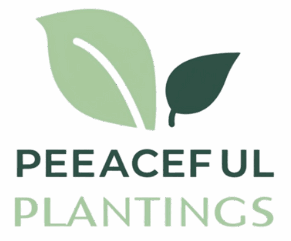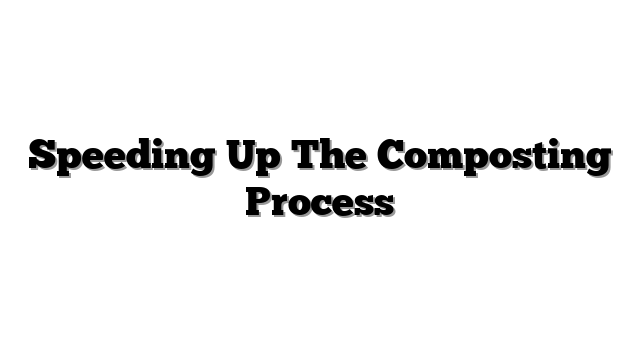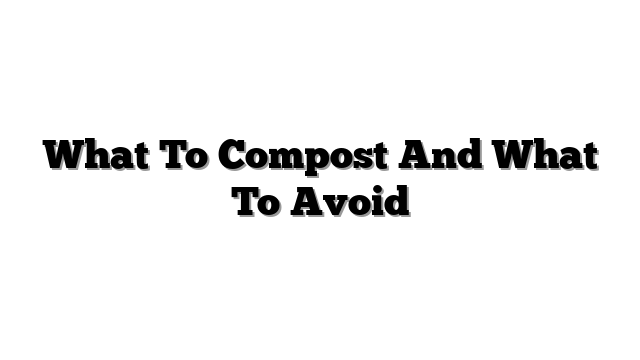Vermicomposting Vs Traditional Composting
Healthy gardens make us happy. Beautiful plants grow tall. Good soil helps them a lot. Compost makes soil rich. It feeds your plants well.
What compost is best? We have two main ways. One uses worms. The other uses a pile. Both turn waste into garden food.
This guide looks at both. We see how they work. We see what they do. We help you pick your path. Find the right way for your garden. Make your plants grow strong in 2025.
What is Traditional Composting?
This is making soil food the old way. Small living things do the work. They are tiny bugs and mold. They break down waste. This needs air. It makes a dark soil-like stuff. We call it compost. It is garden gold.
The Science Behind the Pile
Things need to break down. Tiny life forms eat waste. They need food and air. They need water too. You mix green stuff. This is like grass clips. You mix brown stuff. This is like dry leaves. Greens give nitrogen. Browns give carbon. A good mix helps tiny life.
Water keeps things working. Air gets in when you mix. The pile gets warm. This heat helps break things down fast.
Materials You Can (and Cannot) Compost
Lots of things go in. Yard waste works well. Leaves are good. Grass clippings too. Fruit bits are fine. Veggie peels are okay. Coffee grounds go in. Eggshells are fine. Chop things small. This helps them break down faster.
Some things are bad. Do not add meat. No dairy products. Skip oily food. Sick plants are bad. Pet waste is not safe.
Methods and Structures
You can make a pile. Just put waste in a heap. This needs lots of space. It is simple to start.
Bins hold the waste. They keep things tidy. Plastic bins work. Wood bins are good too. Some bins turn. This mixes the pile easy. Turning helps air get in.
Managing Your Traditional Compost Pile
Mix the pile sometimes. This adds air. Air helps the tiny life. Check the water. Keep it like a wet sponge. Not too wet. Not too dry.
Bad smells can happen. This means not enough air. Mix the pile more. Or it is too wet. Add dry leaves or paper. Is the pile cold? It needs more green stuff. Add grass clips. Compost is ready when it looks like soil. It smells like dirt.
What is Vermicomposting? The Worm Factor
This way uses worms. Special worms eat waste. They eat food scraps. Worms make worm poop. This poop is called castings. Worm castings are great for plants. Worms work in a bin. It is a worm bin.
The Stars of the Show: Compost Worms
Red wigglers are the best. Their science name is Eisenia fetida. They eat food waste fast. They live in bins well. Other worms exist. European nightcrawlers work too. They like deeper bins. You can buy worms online. Or get them from a friend.
Setting Up Your Worm Bin
Pick a bin. It needs air holes. Water must drain out. Size matters. A small bin works for a little waste. Put bedding inside. Shredded paper is good. Wet cardboard works. Coconut fiber is fine. Add the worms carefully.
Feeding Your Worms
Worms eat kitchen bits. Fruit peels are good. Veggie peels are fine. Coffee grounds work. Tea bags are okay. Plain paper is food.
Do not give them too much citrus. Avoid lots of onions. No meat for worms. Dairy is bad. Oily food hurts worms. Spicy food is not good. Give them food slowly at first. Add more as they eat.
Maintaining Your Worm Bin
Keep the bin wet. Like a wet sponge. Check the heat. Worms like room temp. Give them air. Make sure holes are open. Fruit flies can show up. Bury food well. Add more dry bedding. Smell means something is wrong. Too much wet food. Add more paper or cardboard.
Harvesting Worm Castings and Worm Tea
Worms make castings. It looks like dark soil. You need to get it out. Move worms to one side. Put new food on the other. Worms move to the food. Take out the castings. Water drains from the bin. This water is worm tea. It is liquid plant food. Water it down first.
Side-by-Side: Key Differences
Let us look at both ways. They are different.
Speed of Decomposition
Worms work fast. They eat waste quick. Traditional piles take longer. They can take months. Worms finish faster with food scraps. Piles need turning. Piles need heat.
Space Requirements
Worms need little space. A small bin works. It can go inside. Or on a balcony. Piles need more room. They are best outside. Good for small gardens. Good for city homes.
Materials Accepted
Worms eat soft food scraps. Veggies and fruits. They are picky eaters. Piles eat more types. Yard waste works well. Leaves and grass. Tougher stuff breaks down.
Maintenance
Worms need feeding. Check their bin often. Add bedding sometimes. Piles need turning. Check water less often. Different jobs for each.
Output Quality & Type
Worm castings are rich. They are fine like powder. Very good for plants. Traditional compost is coarser. It has less food per scoop. It is good for soil. Worm poop is strong stuff.
Odor Potential
Worm bins smell little. If managed well. They smell earthy. Piles can smell bad. If too wet or not mixed. Odor control is easy with worms.
Cost
Worm bins cost money. Worms cost money. Traditional bins cost money. Or a pile costs nothing. Worms are an upfront cost.
Climate Sensitivity
Worms need warm temps. They slow down in cold. Piles slow down too. But large piles can stay warm. Worms might die if too cold or hot.
Which is Faster? Which is Easier?
Worms work faster on food scraps. Piles take more time usually. Worms need special care. Feeding and checking. Piles need turning. Check water sometimes. What is easier? It depends on you.
Benefits of Each Method
Both ways help your garden. They make soil better.
Why Choose Vermicomposting? Unique Advantages
Worm poop is amazing. It helps plants grow big. It is a soil helper. Great for small spots. Good for inside. Handles food scraps well. Kids can help. It is fun. Worms eat waste fast. Good for pots and containers.
One expert said, “Worm castings are the best soil food.” This was from a soil scientist. Studies show plants love worm poop. It gives them food.
Why Choose Traditional Composting? Key Benefits
It handles big amounts. Lots of leaves? Lots of grass? Piles work great. It takes tougher stuff. Setup is often simple. Just make a pile. Piles get hot. This kills bad seeds. It kills sick plant bits. It makes lots of compost. Good for garden beds. You make a lot of soil helper.
A study in 2023 looked at compost. It showed compost improves soil structure. It holds water better. One statistic shows less trash goes to dumps. People compost more waste.
Choosing the Right Method for Your Garden in 2025
Which way is right for you? Think about your home. Think about your time.
Consider Your Space
Little space? Live in a city? Have a balcony? Worms are good for small spaces. Worm bins fit well. Big yard? Lots of garden beds? Piles need more room. Traditional compost works with big yards.
Consider Your Waste Stream
Mostly kitchen food scraps? Worms eat that well. Lots of leaves? Grass clippings? Tree bits? Piles handle yard waste best. Think about your trash.
Consider Your Time & Effort
Want fast results? Worms work quicker on food. They need regular checks. Turning piles takes effort. Less often than feeding worms. How much time do you have?
Consider Your Goals
Need strong food for pots? Worm poop is potent. Need lots of soil builder? Piles make big amounts. Think about your plants. What do they need?
Consider Your Budget
Worms cost money to start. A bin costs money. A pile can be free. Just pile it up. Plastic bins cost too.
The 2025 Angle: Sustainability & Efficiency
Both ways help the earth. They send less trash away. This helps our planet. Worms fit city life well. They work inside. Piles help with yard waste. More people garden now. Both ways make soil healthy. Good for organic gardens. Using either helps the earth in 2025.
Can You Do Both? Combining Methods
Some people use both. Worms eat kitchen scraps. Piles eat yard waste. You can use compost from a pile. It can be bedding for worms. Both methods work together.
Getting Started Checklist
Want to start?
– Pick your method.
– Get a bin or spot.
– Get materials.
– Get worms if needed.
– Start adding waste.
People Also Ask: Common Composting Questions
Gardeners ask many things.
Is vermicompost better than traditional compost?
Not really better. It is different. Worm poop is stronger. It has more food for plants. Traditional compost makes more. It builds soil structure more. It depends on what you need.
What materials should never go in a worm bin or compost pile?
Do not add meat. No milk or cheese. Skip oils and fats. Sick plants are bad. Pet waste is not safe. These things cause problems.
How long does it take to make compost with each method?
Worms can make compost in months. Traditional piles take longer. Maybe six months or more. It depends on how you manage it. Turning helps it go faster.
How do I use finished worm castings or traditional compost in my garden?
Mix it into soil. Put it on top of soil. Use it in pots. Make compost tea. Plants love this food. It helps them grow.
My compost pile/worm bin smells bad. What am I doing wrong?
It likely has too much water. Or not enough air. Add dry stuff. Mix it well. Bad smells mean something is wrong. Fix it fast.
Choose Your Composting Adventure for a Healthier Garden
You saw the two ways. Worms make rich food. Piles make lots of soil help. Both Vermicomposting vs. Traditional Composting build soil health. They make soil better.
Pick the way that fits you. Think about your space. Think about your waste. Start small today. Any composting helps. It is good for plants. It is good for the earth. It is sustainable gardening. Send less waste away. Help your garden grow strong. Try composting now.






